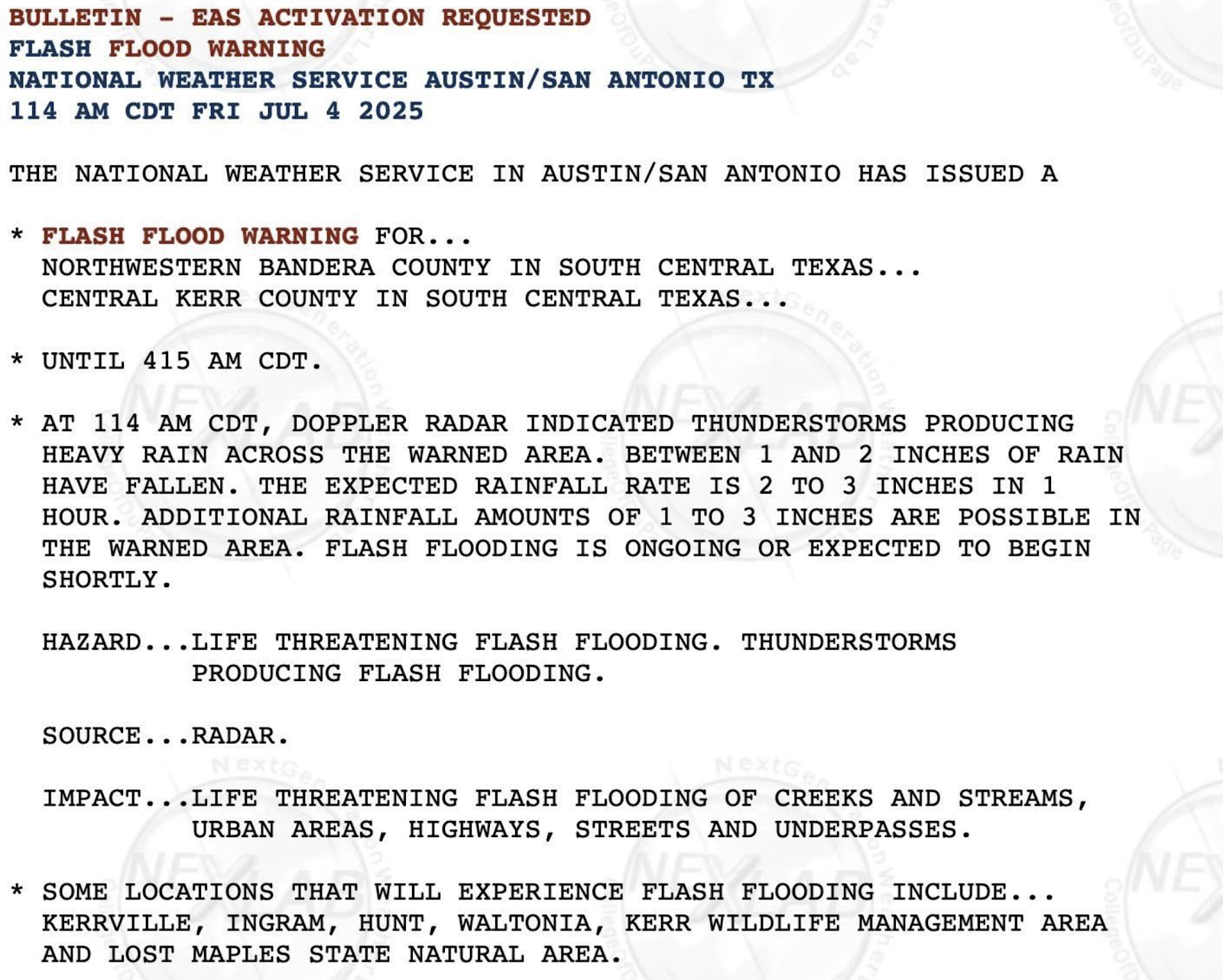On Friday morning, heavy rains led to catastrophic flooding along the Guadalupe River in central Texas.
Tragically, it appears that at least fifty people lost their lives.
But what is particularly disturbing is that the National Weather Service (NWS) provided excellent warnings and forecasts before the event that clearly predicted a substantial threat.
And yet, no attempt at evacuation was made.
Furthermore, weather model forecasts indicated the potential for a major precipitation event over this historically flood-prone region during the prior days.
The EventThe flooding occurred around 4 AM on July 4.
A heavy precipitation event was forecast for the region during the previous days. For example, the NOAA/NWS HRRR forecast from 8 PM July 3 (the evening before) predicted a band of heavy rain over central Texas.
THE DAY BEFORE, the NWS Forecast Office in San Antonia put out a flood watch for central Texas Hill Country, which included the site of the tragedy. During the subsequent hours, the National Weather Service communicated increasingly strong warnings, including flash flood warnings. A children's camp on a floodplain should have been evacuated.
Here is the warning by the local NWS office several hours before the flood.
Also consider the warning by the National Weather Service Weather Prediction Center (WPC) before the event:
As the event got closer, with National Weather Service radar showing the event unfolding, the San Antonia office made the threat explicit, noting a very dangerous flash event.
Any media or other organization suggesting that the National Weather Service was not on top of this event is not only not telling the truth, but doing a deep disservice to the highly professional and skillful folks in that organization.
Some folks are making such suggestions for patently political reasons. Extraordinarily unethical and wrong.
Areas along the Guadalupe River have flooded catastrophically many times in the past, and not evacuating low-lying areas with such warnings verges on criminal neglect. The local county (Kerr) does not even have a flood warning system in place.
The Texas flooding is another example of large numbers of deaths, even when weather forecasts are excellent, with all too many other examples, including the Maui wildfires, the LA wildfires, and flooding from Hurricane Helene.
But if you really want to experience media and advocacy group loss of moral compass, consider those claiming this event is the result of global warming.
For example, this connection was suggested by the New York Times:
There is NO EVIDENCE that the central Texas floods are the result of climate change.
For example, the Environmental Protection Agency has noted that flooding is DECLINING over time in that region (see below)
I examined this issue myself. Below is a plot of the extreme daily precipitation in July for nearby San Antonio from the 1940s to today.
There is NO upward trend, which suggests that climate change is not a factor in this event.
If climate change was significant, there WOULD be an upward trend.
In summary, society needs to learn how to effectively use the greatly improved prediction and observational capabilities that now exist.
Most weather-related deaths can be prevented if society makes use of this valuable information.
Those using disasters to support their political and social change agendas are not only hurting those they wish to help, but acting in a morally and ethically indefensible way.














.jpeg)
.png)


